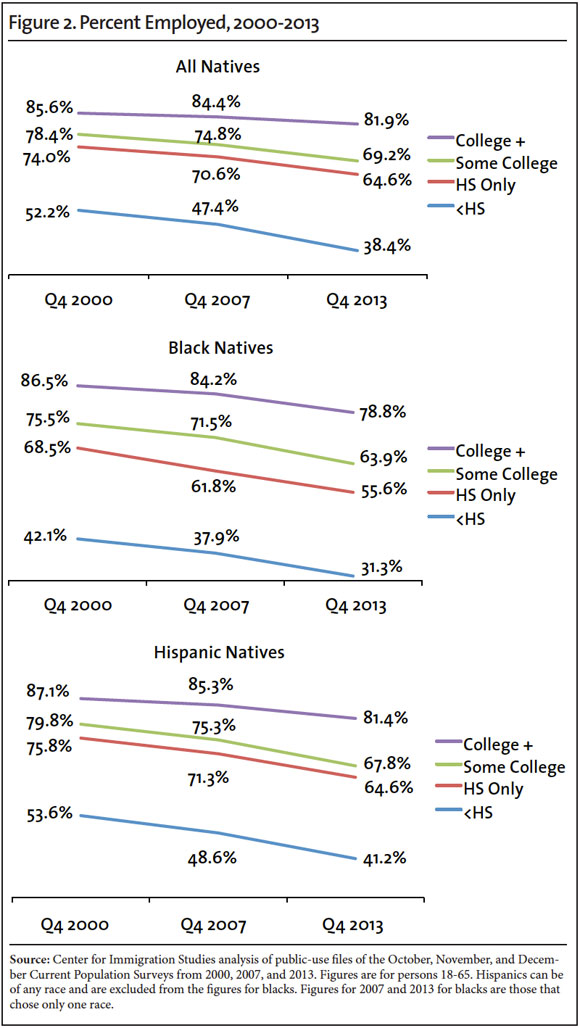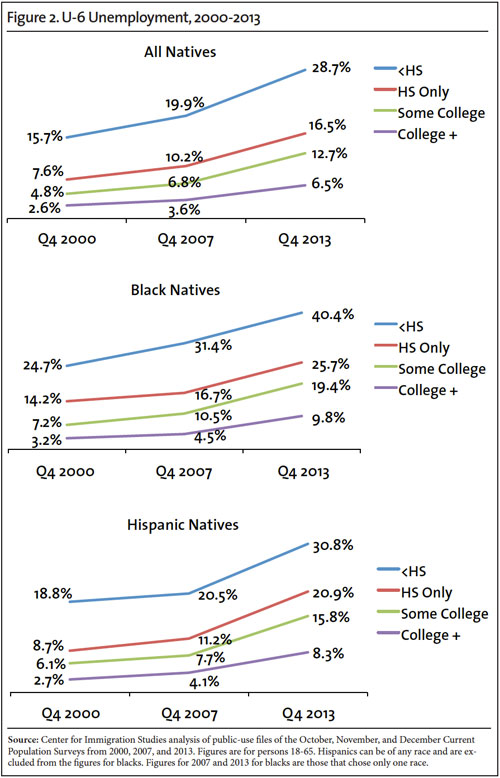The fact is that immigrants, legal and illegal, use welfare programs to a greater degree than the native born. The illegal aliens are prohibited from using welfare except thru their US born children who receive such things as food stamps and Medicaid. Legal immigrants (citizens and non-citizens) are entitled to welfare and UE benefits.
There are no jobs Americans won't do. There is no shortage of labor. If that were the case, wages would be going up, not down. Immigrants, legal and illegal, are taking jobs from Americans and depressing wages.
Among the findings:
Of the 472 civilian occupations, only six are majority immigrant (legal and illegal). These six occupations account for 1 percent of the total U.S. workforce. Moreover, native-born Americans still comprise 46 percent of workers even in these occupations.
Natives tend to have high unemployment in high-immigrant occupations, averaging 14 percent during the 2009-2011 period, compared to 8 percent in the rest of the labor market. There were a total of 2.6 million unemployed native-born Americans in high-immigrant occupations.
Some may think that native-born workers in high-immigrant occupations are mostly older, with few young natives willing to do such work. But 34 percent of natives in these occupations are age 30 or younger, compared to 27 percent of natives in the rest of labor force.
It is worth remembering that not all high-immigrant occupations are lower skilled. For example, 36 percent of software engineers are immigrants as are 27 percent of physicians.
Government data show that since 2000 all of the net gain in the number of working-age (16 to 65) people holding a job has gone to immigrants (legal and illegal). This is remarkable given that native-born Americans accounted for two-thirds of the growth in the total working-age population. Though there has been some recovery from the Great Recession, there were still fewer working-age natives holding a job in the first quarter of 2014 than in 2000, while the number of immigrants with a job was 5.7 million above the 2000 level.
All of the net increase in employment went to immigrants in the last 14 years partly because, even before the Great Recession, immigrants were gaining a disproportionate share of jobs relative to their share of population growth. In addition, natives' losses were somewhat greater during the recession and immigrants have recovered more quickly from it.
First, the long-term decline in the employment for natives across age and education levels is a clear indication that there is no general labor shortage, which is a primary justification for the large increases in immigration (skilled and unskilled) in the Schumer-Rubio bill and similar House proposals.
Second, the decline in work among the native-born over the last 14 years of high immigration is consistent with research showing that immigration reduces employment for natives.
Third, the trends since 2000 challenge the argument that immigration on balance increases job opportunities for natives. Over 17 million immigrants arrived in the country in the last 14 years, yet native employment has deteriorated significantly.
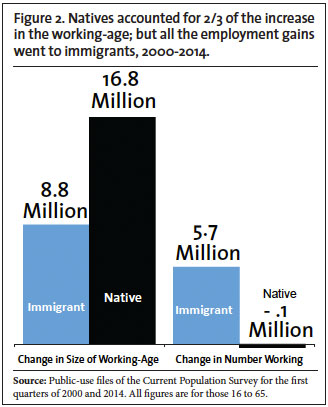
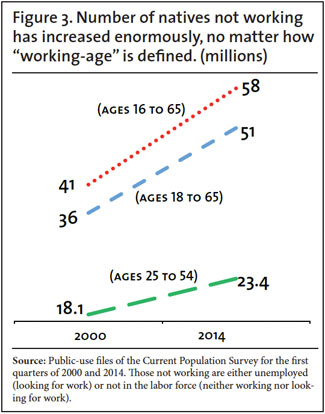
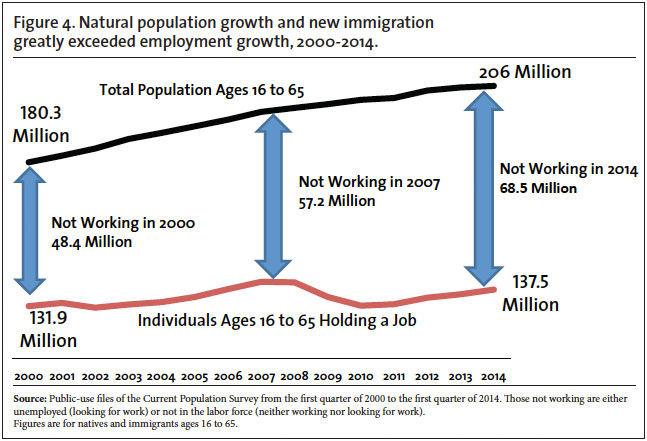
First we were told by the corporate and political classes that there were jobs Americans won't do, hence the need for large numbers of unskilled immigrant labor. Now we are told that there are jobs Americans can't do hence the need for large numbers of skilled labor (STEM workers). This is all crap. The data show a far different story. It is all about the bottom line plus having an exploitable pool of docile, immigrant labor who are more easily controlled.
